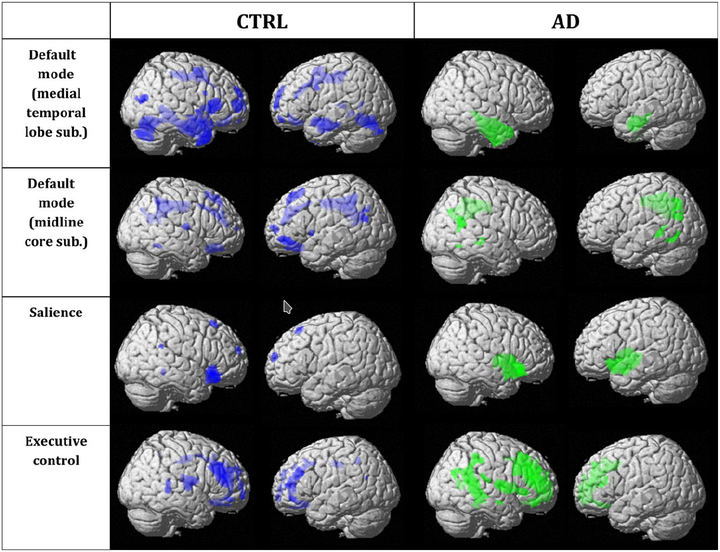Altered Gray Matter Structural Covariance Networks in Early Stages of Alzheimer's Disease

Résumé
Clinical symptoms observed in Alzheimer’s disease (AD) patients may reflect variations within specific large-scale brain networks, modeling AD as a disconnection syndrome. The present magnetic resonance imaging study aims to compare the organization of gray matter structural covariance networks between 109 cognitively unimpaired controls (CTRL) and 109 AD patients positive to beta-amyloid at the early stages of the disease, using voxel-based morphometry. The default-mode network (DMN; medial temporal lobe subsystem) was less extended in AD patients in comparison with CTRL, with a significant decrease in the structural association between the entorhinal cortex and the medial prefrontal and the dorsolateral prefrontal cortices. The DMN (midline core subsystem) was also less extended in AD patients. Trends toward increased structural association were observed in the salience and executive control networks. The observed changes suggest that early disruptions in structural association between heteromodal association cortices and the entorhinal cortex could contribute to an isolation of the hippocampal formation, potentially giving rise to the clinical hallmark of AD, progressive memory impairment. It also provides critical support to the hypothesis that the reduced connectivity within the DMN in early AD is accompanied by an enhancement of connectivity in the salience and executive control networks.